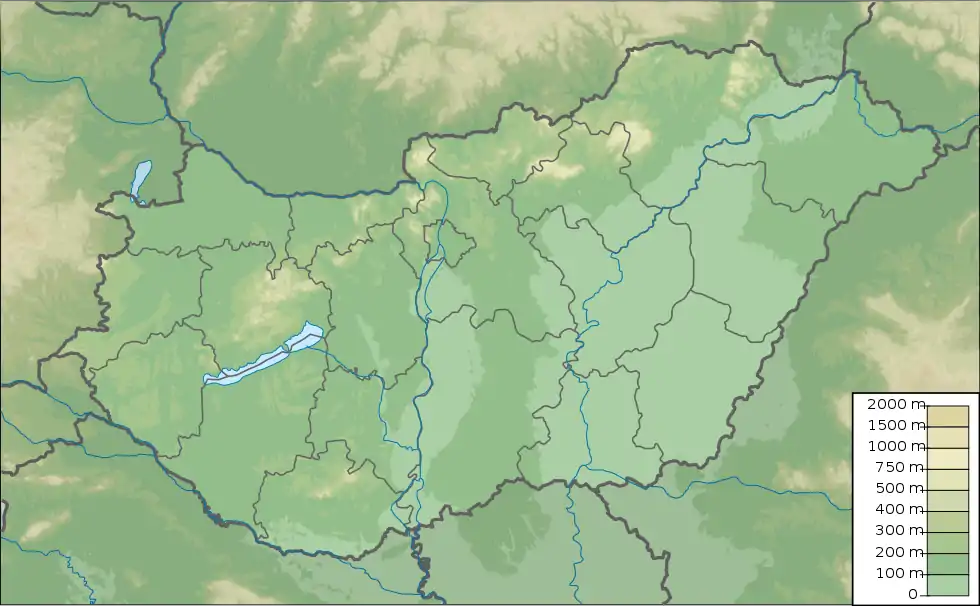Panoramic view of Gödény-halom | |
 Shown within Hungary | |
| Location | Békésszentandrás |
|---|---|
| Region | Hungary |
| Coordinates | 46°48′48″N 20°26′41″E / 46.813306°N 20.444658°E |
| Type | Tumulus |
| History | |
| Periods | Neolithic / Bronze Age |
Gödény-halom (transl. Pelican mound) is a prehistoric mound situated near the village of Békésszentandrás in Békés County, in the Southern Great Plain region of south-east Hungary.
Description
Gödény-halom is situated 7 kilometres away from the inner area of Békésszentandrás, close to the old road to Szentes.[1] It is in the one-time flood area of the River Hármas-Körös.[1] The name gödény (English: pelican) refers to the fact that it was once a roosting spot for pelicans in the swampy area.[1] Today, it marks the county boundaries of Békés, Csongrád and Szolnok.[2] Part of the northern side has been destroyed for the building of roads and a nearby dam.[1]
Gödény-halom is the largest of the so-called Cumanian mounds of central Europe, and the highest prehistoric mound in Hungary with a height 12.2 metres.[3] The Cumanian mounds are structures of uncertain age and origin and made by humans.[2] It is generally thought that they were used as burial places in the Neolithic and Bronze Ages.[3]